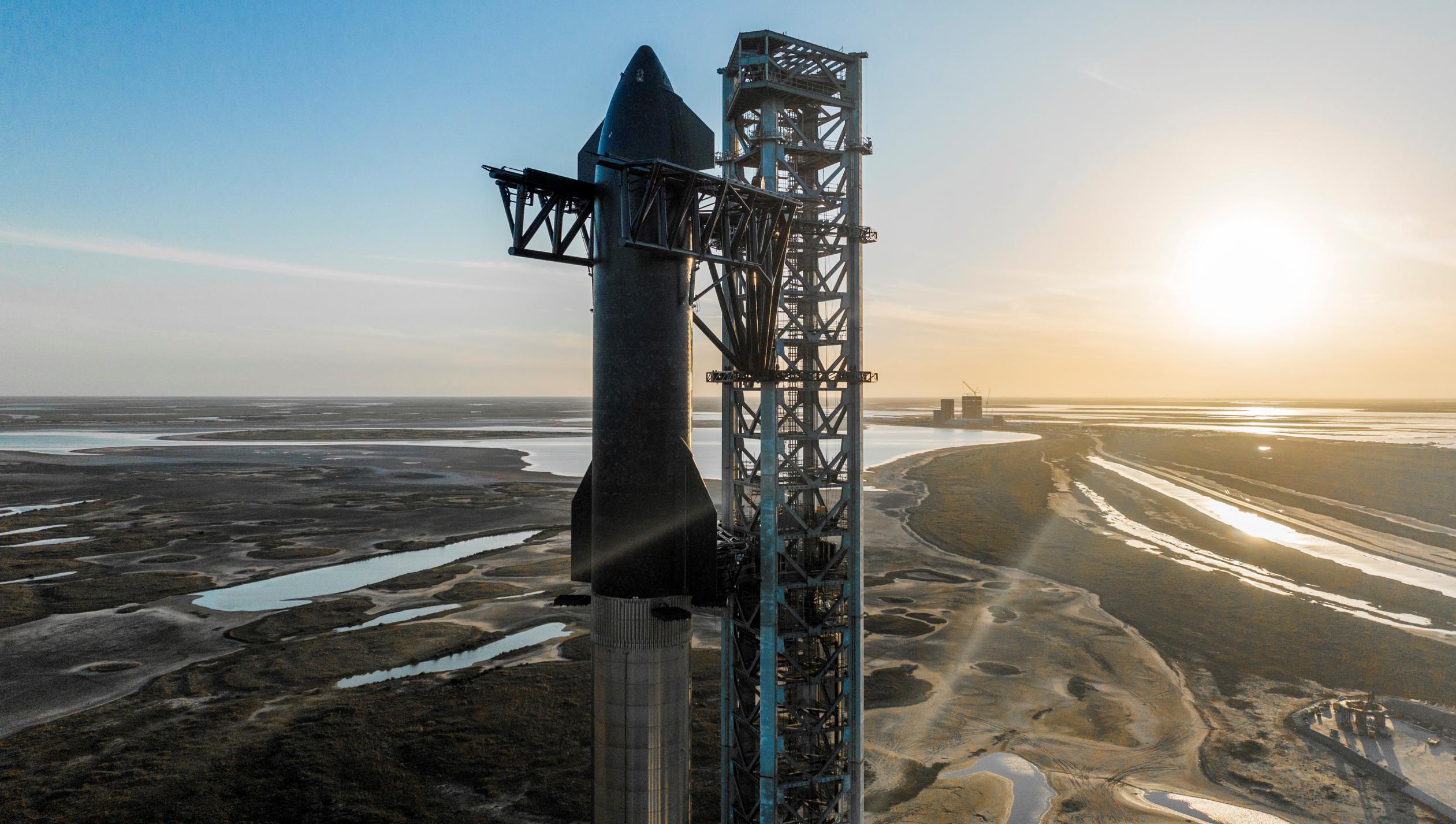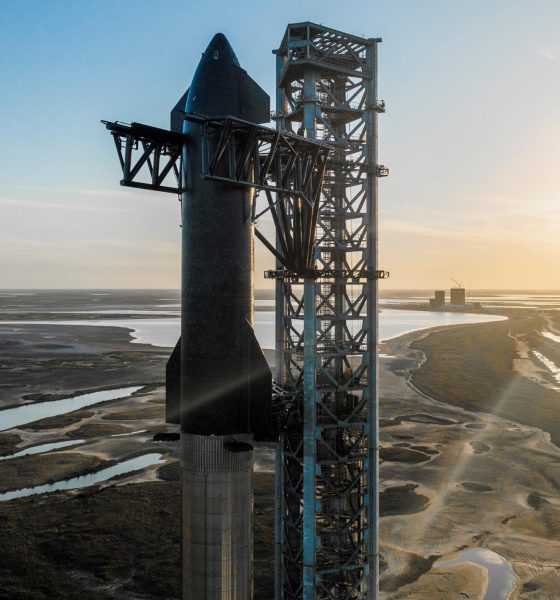

News
SpaceX a big step closer to orbital Starship launches after passing FAA environmental review
SpaceX has secured environmental approval from the FAA and relevant federal, state, and local stakeholders to conduct orbital Starship launches on the South Texas coast.
After a relatively normal 12 months of work and half a dozen poorly communicated delays, the FAA has ultimately issued SpaceX an extremely favorable “Mitigated Finding of No Significant Impact” or Mitigated FONSI for its plans to conduct a very limited number of orbital Starship launches per year out of Boca Chica, Texas. With the receipt of that final programmatic environmental assessment (PEA), SpaceX has arguably hurdled the most difficult regulatory barrier for Texas orbital Starship launches and secured itself a foundation upon which it should be able to attempt to expand the scope of Starbase’s long-term utility.
To secure that favorable result, however, SpaceX ultimately agreed to dozens upon dozens of “mitigations” that will take a significant amount of work to complete and maintain in order to partially alleviate some of the launch site’s environmental impact. It’s also far from the last regulatory hurdle standing between SpaceX and orbital Starship launches.
In many ways, Starbase’s Final PEA is a bit simpler than what SpaceX initially requested in its September 2021 draft. As previously discussed, it was already known that SpaceX had withdrawn initial plans to build its own dedicated natural gas power plant, desalination plant, and natural gas refinery and liquefaction facilities at or near the launch site before the draft was finalized. The Final PEA goes a bit further, simplifying SpaceX’s initial request for two “phases” of annual Starship launch operations and settling on a single “operational phase” that allows up to five suborbital and five orbital Starship launches per year.
However, aside from the already expected removal of onsite methane fuel production and all associated facilities, the rest of the Final PEA appears to be surprisingly close – if not outright identical – to SpaceX’s Starbase Draft PEA. Crucially, SpaceX was not forced to reduce the number of permitted orbital launches, suborbital launches, or ship/booster static fire tests it originally pursued. While a maximum of five orbital launches will severely limit Starbase’s utility outside of early flight testing, it’s still a big improvement over a compromise for 1-4 annual launches.


Perhaps even more notably, the Final PEA also includes permission for up to 500 hours of highway closures for nominal operations and up to 300 hours of closures for emergency anomaly response per year – exactly what SpaceX requested in its Draft PEA. In 2014, SpaceX completed an even more thorough environmental impact statement (EIS) for Falcon rocket launches out of Boca Chica and received approval for no more than 180 hours of annual closures – a restriction that could have made Starbase virtually unusable as a hub for Starship development.
Of the dozens of mitigations SpaceX will have to implement to conduct Starship launches under its new Starbase PEA, a majority appear to be normal and reasonable. Most focus on specific aspects of things already discussed, like protecting turtles (lighting, beach cleanup, education, nest scouting and monitoring, etc.), safeguarding other protected species, respecting impacted areas of historical importance; ensuring that road closures avoid certain holidays and periods to limit Starbase’s impact on local use of public parks and beaches; and other common-sense extensions of existing rules and regulations. In a few cases, SpaceX has even agreed to deploy solar-powered Starlink internet terminals to enable “enhanced satellite monitoring” of wildlife for the US Fish and Wildlife Service and Peregrine Fund.
Others are oddly specific and read a bit more like local and state agencies taking advantage of their leverage to get SpaceX to manage and pay for basic infrastructure maintenance and improvement that any functional government should already be doing. The lengthy list of odd “mitigations” includes the following:
- Quarterly beach and highway cleanups
- Construct at least one highway wildlife crossing
- Construct a wildlife viewing platform along Highway 4
- Complete and maintain traffic control fencing demarcating the boundaries of TPWD land along said public highway
- $5,000 per year to “enhance” the Texas Parks and Wildlife Department’s (TPWD) fishing “Tackle Loaner Program”
- Prepare a history report on any events and activities of the Mexican War and Civil War that took place in all affected areas of historical importance
- Fund the development of five signs explaining the “history and significance” of those areas
- “[Replicate and install] the missing stars and wreaths on the Palmetto Pilings Historical Marker”
Ultimately, the Final PEA SpaceX received is an extremely positive outcome, and there should be little doubt that SpaceX will complete all mitigations requested of it and help improve aspects of Boca Chica, Texas as a result. Up next, SpaceX will need to secure an orbital Starship launch license from the FAA by demonstrating, to the agency’s satisfaction, that it meets “safety, risk, and financial responsibility requirements” in addition to all environmental requirements. The company has already begun that process with the FAA, but it could still take weeks or months after the Final PEA to secure an operator license or experimental permit. Any such license or permit will be conditional upon the completion of all mitigation requirements established by the PEA.

News
Elon Musk’s Grokipedia surges to 5.6M articles, almost 79% of English Wikipedia
The explosive growth marks a major milestone for the AI-powered online encyclopedia, which was launched by Elon Musk’s xAI just months ago.

Elon Musk’s Grokipedia has grown to an impressive 5,615,201 articles as of today, closing in on 79% of the English Wikipedia’s current total of 7,119,376 articles.
The explosive growth marks a major milestone for the AI-powered online encyclopedia, which was launched by Elon Musk’s xAI just months ago. Needless to say, it would only be a matter of time before Grokipedia exceeds English Wikipedia in sheer volume.
Grokipedia’s rapid growth
xAI’s vision for Grokipedia emphasizes neutrality, while Grok’s reasoning capabilities allow for fast drafting and fact-checking. When Elon Musk announced the initiative in late September 2025, he noted that Grokipedia would be an improvement to Wikipedia because it would be designed to avoid bias.
At the time, Musk noted that Grokipedia “is a necessary step towards the xAI goal of understanding the Universe.”
Grokipedia was launched in late October, and while xAI was careful to list it only as Version 0.1 at the time, the online encyclopedia immediately earned praise. Wikipedia co-founder Larry Sanger highlighted the project’s innovative approach, noting how it leverages AI to fill knowledge gaps and enable rapid updates. Netizens also observed how Grokipedia tends to present articles in a more objective manner compared to Wikipedia, which is edited by humans.
Elon Musk’s ambitious plans
With 5,615,201 total articles, Grokipedia has now grown to almost 79% of English Wikipedia’s article base. This is incredibly quick, though Grokipedia remains text-only for now. xAI, for its part, has now updated the online encyclopedia’s iteration to v0.2.
Elon Musk has shared bold ideas for Grokipedia, including sending a record of the entire knowledge base to space as part of xAI’s mission to preserve and expand human understanding. At some point, Musk stated that Grokipedia will be renamed to Encyclopedia Galactica, and it will be sent to the cosmos.
“When Grokipedia is good enough (long way to go), we will change the name to Encyclopedia Galactica. It will be an open source distillation of all knowledge, including audio, images and video. Join xAI to help build the sci-fi version of the Library of Alexandria!” Musk wrote, adding in a later post that “Copies will be etched in stone and sent to the Moon, Mars and beyond. This time, it will not be lost.”
News
Tesla Model 3 becomes Netherlands’ best-selling used EV in 2025
More than one in ten second-hand electric cars sold in the country last year was a Tesla Model 3.

The Tesla Model 3 became the most popular used electric car in the Netherlands in 2025, cementing its dominance well beyond the country’s new-car market.
After years at the top of Dutch EV sales charts, the Model 3 now leads the country’s second-hand EV market by a wide margin, as record used-car purchases pushed electric vehicles further into the mainstream.
Model 3 takes a commanding lead
The Netherlands recorded more than 2.1 million used car sales last year, the highest level on record. Of those, roughly 4.8%, or about 102,000 vehicles, were electric. Within that growing segment, the Tesla Model 3 stood far ahead of its competitors.
In 2025 alone, 11,338 used Model 3s changed hands, giving the car an 11.1% share of the country’s entire used EV market. That means more than one in ten second-hand electric cars sold in the country last year was a Tesla Model 3, Auto Week Netherlands reported. The scale of its lead is striking: the gap between the Model 3 and the second-place finisher, the Volkswagen ID3, is more than 6,700 vehicles.
Rivals trail as residual values shape rankings
The Volkswagen ID.3 ranked a distant second, with 4,595 used units sold and a 4.5% market share. Close behind was the Audi e-tron, which placed third with 4,236 registrations. As noted by Auto Week Netherlands, relatively low residual values likely boosted the e-tron’s appeal in the used market, despite its higher original price.
Other strong performers included the Kia Niro, the Tesla Model Y, and the Hyundai Kona, highlighting continued demand for compact and midsize electric vehicles with proven range and reliability. No other model, however, came close to matching the Model 3’s scale or market presence.
News
Tesla Model Y Standard Long Range RWD launches in Europe
The update was announced by Tesla Europe & Middle East in a post on its official social media account on X.

Tesla has expanded the Model Y lineup in Europe with the introduction of the Standard Long Range RWD variant, which offers an impressive 657 km of WLTP range.
The update was announced by Tesla Europe & Middle East in a post on its official social media account on X.
Model Y Standard Long Range RWD Details
Tesla Europe & Middle East highlighted some of the Model Y Standard Long Range RWD’s most notable specs, from its 657 km of WLTP range to its 2,118 liters of cargo volume. More importantly, Tesla also noted that the newly released variant only consumes 12.7 kWh per 100 km, making it the most efficient Model Y to date.
The Model Y Standard provides a lower entry point for consumers who wish to enter the Tesla ecosystem at the lowest possible price. While the Model 3 Standard is still more affordable, some consumers might prefer the Model Y Standard due to its larger size and crossover form factor. The fact that the Model Y Standard is equipped with Tesla’s AI4 computer also makes it ready for FSD’s eventual rollout to the region.
Top Gear’s Model Y Standard review
Top Gear‘s recent review of the Tesla Model Y Standard highlighted some of the vehicle’s most notable features, such as its impressive real-world range, stellar infotainment system, and spacious interior. As per the publication, the Model Y Standard still retains a lot of what makes Tesla’s vehicles well-rounded, even if it’s been equipped with a simplified interior.
Top Gear compared the Model Y Standard to its rivals in the same segment. “The introduction of the Standard trim brings the Model Y in line with the entry price of most of its closest competition. In fact, it’s actually cheaper than a Peugeot e-3008 and costs £5k less than an entry-level Audi Q4 e-tron. It also makes the Ford Mustang Mach-E look a little short with its higher entry price and worse range,” the publication wrote.








